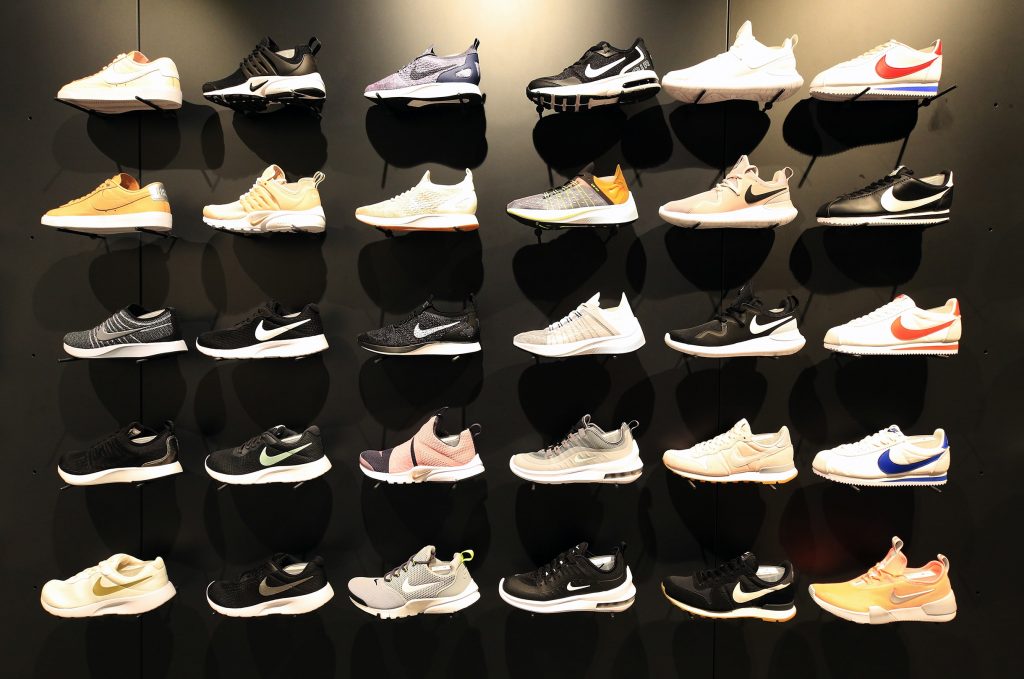What is digitalization? The core of Industry 4.0
Digitalization, through the fourth industrial revolution, more widely known as Industry 4.0, is the link to the future and providing more of what today's end consumers want from products.

Table of contents
What is industry 4.0?
According to a PwC report, Industry 4.0 is “about companies orienting themselves to the consumer through e-commerce, digital marketing, social media, and the consumer experience […] through the vertical integration of research and development, manufacturing, marketing and sales, and other internal operations, and new business models based on these advances.”
This can happen using digital technologies to integrate all moving parts and drive operations and growth fully. Digital technologies such as the cloud, big data, the Internet of Things, 3D printing, and augmented reality.
A report by Deloitte states that Industry 4.0 will change:
- How we make things
- How those things transit (through autonomous logistics and distribution)
- Consumers interacting with them
- The experiences they expect to have as they interact with companies
Many businesses are, slowly but surely, pushing towards deploying new technologies to accelerate traditional industrial and manufacturing practices. In part, making Industry 4.0 a reality.
However, many are digitizing rather than digitalizing — two terms that are commonly thought to be interchangeable (they’re not).
What is digitalization?
According to Gartner, digitization is “the process of changing from analog to digital format.” This process creates digitized data “without any different-in-kind changes to the process itself,” which can then be used for business purposes.
That’s where digitalization comes in, which happens when “digital technologies [are used] to change a business model and provide new revenue and value-producing opportunities.”
Take counterfeit goods, for instance. Previously, companies had to rely on investigation agencies, legal counsel, local sources, distributors, and law enforcement to keep track of and monitor counterfeiting.
However, they had no effective way to let their consumers know how to spot counterfeits. The problem was twofold. This might potentially reveal trade secrets, and companies would rather not admit publicly they have an issue with counterfeiting. With the proliferation of e-commerce, this has only become more difficult for brands. And consumers are faced with more platforms to purchase from, and as such, more opportunities to be swindled.

What happens if they decide to digitalize the tracking process? For example, the company might place secured QR codes on the tags of their items, which would allow consumers to authenticate the product in question simply by scanning the code with an app.
In this way, consumers gain the added value of knowing that their purchasing is the real deal. Through a single, simple step instead of searching for the information they need. As a result, their trust in the company increases, and barriers to purchase are reduced significantly — a win-win scenario.
Read here to learn about:
Digitalization use cases
The QR code we mentioned previously is, in fact, one of our core Scantrust products. Here, we strongly believe that secure digitalization has immense benefits for any company dealing with physical goods. But, again, this is regardless of the industry that you are in.
As you probably know, product deliveries tend to follow a very standardized process. For example, the aforementioned PwC report outlines it as such:
- The marketing team will analyze consumer demand, and based on their findings, attempt to predict sales for the coming period.
- With those numbers in mind, manufacturing will order raw materials, components, and parts to prepare to meet that demand.
- The distribution team accounts for upcoming changes in the amount of product from the pipeline and updates consumers when they can expect their deliveries.
- If all goes well, the gap between demand and supply throughout the system is as small as possible.
Naturally, the report continues, this “rarely happens,” largely due to the lack of transparency between teams and departments. As a result, none of the “links in the supply chain really understand what any other link is doing. Or needs.”
The vision of Industry 4.0 is to build a digital supply chain. One that would break down the walls and cause it to be fully transparent to all players involved. This would require companies to not only digitize but to digitalize.
The rest of this article will dive into examples of how digitalization can improve your business processes. Whether you’re in charge of overseeing the supply chain, selling your brand, or marketing products.
How can supply chain managers benefit from digitalization?
If your company deals with physical goods, you’ll know that the supply chain is the heart of your business.
According to the same report by PwC, companies with “highly digitized supply chains and operations” can expect efficiency gains of 4.1%, as well as a 2.9% increase in revenue annually.
In another study by PwC, a third of respondents also say their companies have started to digitalize their supply chains, with another 72% expecting to have done so five years from now.
As a supply chain manager, the transparency gained through digitalization will let you detect anomalies occurring anywhere in the chain. Anomalies that might affect supply and demand and allow you to come up with solutions right away.
As a result, there are fewer risks involved at the supply chain level. Additionally, consumers would receive the right products faster.

For instance, consumer products company Colgate-Palmolive’s recent adoption of Smart Manufacturing has allowed them to “address complex problems and further achieve operational excellence”:
“Factories are starting to use sensors to predict failures, collaborative robots for material handling, auto palletizers, hand-held wireless devices for material flow, as well as radio frequency identification (RFID) to track pallets and inventory. Some factories have video feeds and cameras for remote operator support.”
This program, reported Colgate-Palmolive director Andres Bejarano, has helped the team “improve 10 points on our asset utilization […] delivering significant savings due to productivity improvement.”
This level of transparency enables supply chain traceability, allowing you to analyze all the moving parts in your chain at a more granular level. Ideally, each of your physical products would have a ‘digital identity’— their unique data and content —that you can follow through the chain. This, in turn, allows you to fine-tune your processes to accommodate important consumer needs and wants.
At Scantrust, such identities are given to products through Supply Chain Management (SCM) Tags, which enable supply chain managers to set up and associate unique data and attributes to individual products.
For instance, with SCM Tags, supply chain managers can set up automated alerts for anomalies such as ‘Off-Market’ and ‘After Sell By Date.’ Whenever these events surface, notifications can be pushed to end-consumers for product recalls, making it easier to trace affected products. This also allows the business to protect the integrity of its brand.

Product authentication is another great example of tracking and tracing in action. For example, your ideal consumer will likely be extremely discerning if your company sells luxury goods and will want to know beyond doubt whether your items are the real deal.
A digital supply chain would allow you to trace the item that’s in their hands back to its provenance—ensuring that it did indeed originate from your warehouses—and pass this information on to the consumer right away.
Finally, a digital supply chain would also allow you to optimize and automate these processes for maximum efficiency, achieving better results at scale. In the long run, such refinements would lower costs across the board.
Businesses with critical supply chain management needs benefit from digitalization in the following ways:
- Tag individual products based on their unique data and attributes, giving them ‘digital identities which can be tracked and traced throughout the supply chain
- Early detection of anomalies occurring anywhere in the chain that might affect supply and demand
- Set up automated alerts when anomalies are detected and easily identify affected products
- Authenticate products by tracing them back to their provenance
- Increase efficiency and lower costs by optimizing and automating such processes
How can brand and marketing managers benefit from digitalization?
Previously, we discussed how today’s consumers want to be as informed as possible.
This applies not just to luxury goods but even day-to-day consumables such as coffee and wine. Modern consumers want to know that their consumption choices are socially responsible and environmentally friendly—and they are willing to put their wallets where their mouths are.
According to a survey conducted by data and measurement company Nielsen, 66% of respondents indicated that they’re willing to pay more for products and services that come from companies that are committed to positive social and environmental impact.
This is especially so when it comes to food—at least, for Americans. A recent study commissioned by the USDA (U.S. Department of Agriculture) found that more than half of Americans were concerned about bioengineered food.
With a digital supply chain, for example, using QR codes, brand and marketing managers would track and trace their products back to their provenance, providing consumers with tangible proof to reassure them that what they are consuming is indeed genuine, securing their loyalty.
In the case of food, many brands are interested in using QR codes on packaging “to disclose GMO and other food information [which] provides a couple of major benefits to food manufacturers.” Already, Austrian grocery chain SPAR Österreich has taken a more direct approach, deploying over a hundred iBeacons per store which would allow them to “issue tailored messages about promotional campaigns to customers.”
As you can see, such ‘smart packaging’ provides brand and marketing managers with an additional channel to engage end-consumers. Gamification, loyalty programs, and storytelling are ways to encourage consumers to follow, re-engage, and advocate for your brand and products.
In addition, such campaigns provide valuable data points such as what products consumers are looking for, when demand is high for them, and how they prefer to receive deliveries. Armed with this knowledge, brand and marketing managers can provide the relevant information at the right moment in the consumer journey to maximize conversions or reinforce brand promises.
The same data can also provide category managers with insights into the products that consumers tend to order together and bundle them with a discount in the right season to sell more units.
Brand marketing efforts of businesses benefit from digitalization in these ways:
- Increase brand loyalty by assuring end-consumers that products are socially and environmentally friendly and authentic by providing proof that tracks them back to their provenance.
- Encourage consumers to follow, re-engage, and advocate for your brand and products through gamification, loyalty programs, and storytelling campaigns.
- Maximize conversions by providing relevant information at the right moment in the consumer journey
- Sell more units by bundling products that consumers tend to buy together with a discount in the right season
Read other articles in this series: